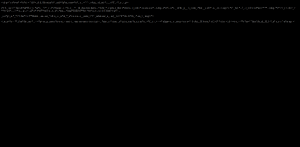
Beyond what other forms of electronic literature have taken advantage of the computer, network writing uses the possibilities present with the Internet. The simple goal of network writing is to take what is typically invisible to the viewer online and incorporate it in the piece of work so that it becomes visible. With an oddly specific goal in mind, it is fascinating how many subgenres of network writing exist and thrive online, from flarf to webpage fiction to net critique.
Network writing is perhaps the most clear form of electronic literature that wears its heart on its sleeve. Rettberg explains this in Electronic Literature: “As technology has led to rapid societal change, one of the most logical extensions of the project of electronic literature is to serve as a locus of reflexive critique of the position of the human within the technological apparatus” (Rettberg, 152). Although this understanding of network writing may sound akin to science fiction, networking writing is much more personal as it constantly reminds the reader that the flowing relationship between human and technology is a product of today.
Much like other forms of electronic literature, network writing is experimental. Tiselli’s piece “degenerative and regenerative” brought the code to the website to the forefront by allowing the people who visited the website to be responsible for breaking the code and revealing it bit by bit. Tiselli pointed out both the flexibility and fragility of our network as a result. Lernert Engelberts and Sander Plug’s “I Love Alaska” took advantage of the network’s fragility to paint the story of a distraught housewife in Alaska whose saddening relationship with Google was leaked to the world, alongside about 650,000 other people. John Cayley’s “The Listeners” uses an infrastructure built atop Amazon’s Alexa to create a sort of modern ELIZA, testing the ability (or perhaps more so highlighting the inability) of technology to serve as therapy and emulate human emotions. Although all three of these pieces are vastly different, they all play with the many possibilities of the Internet and the network to push the boundaries of technology and its relationship with modern society.